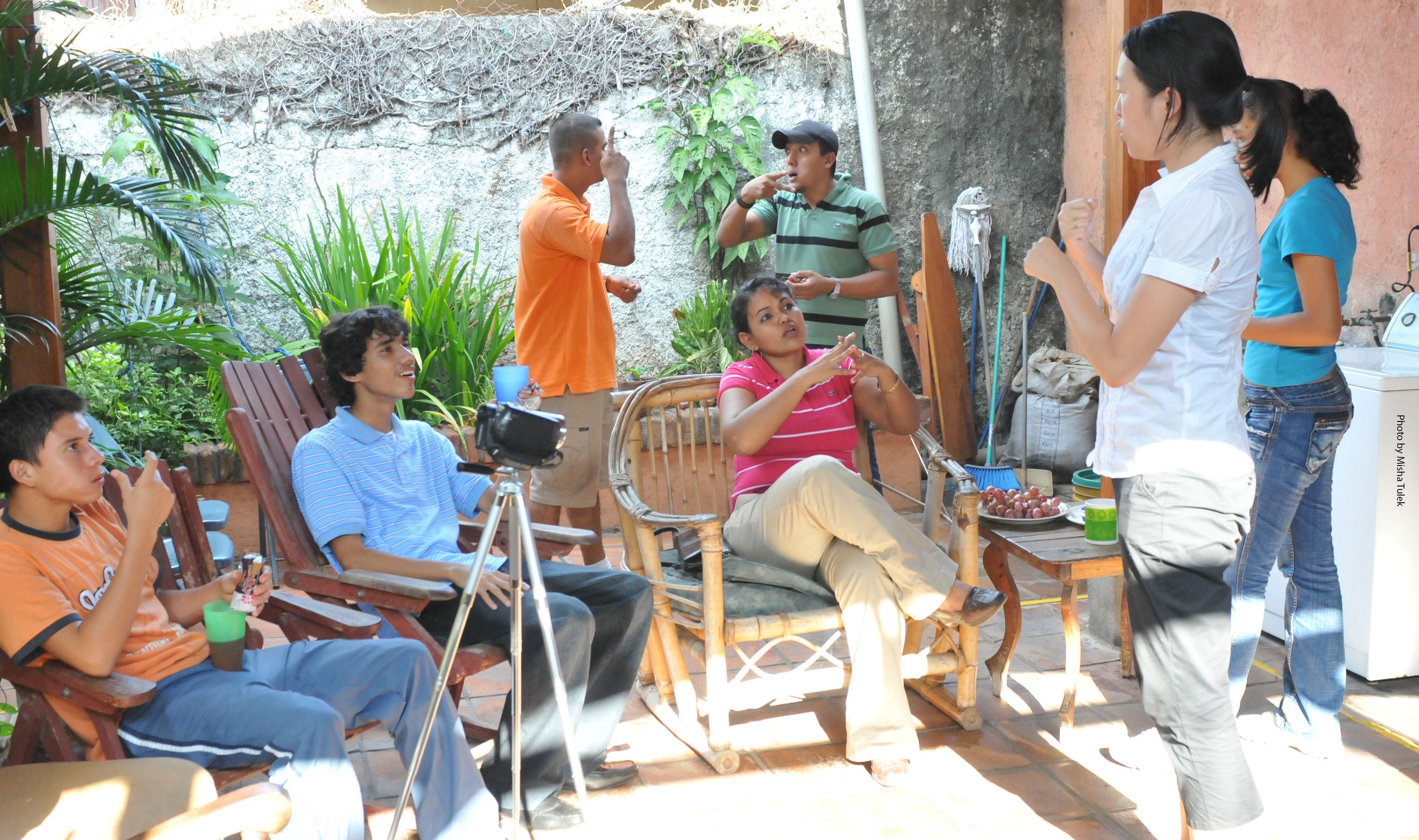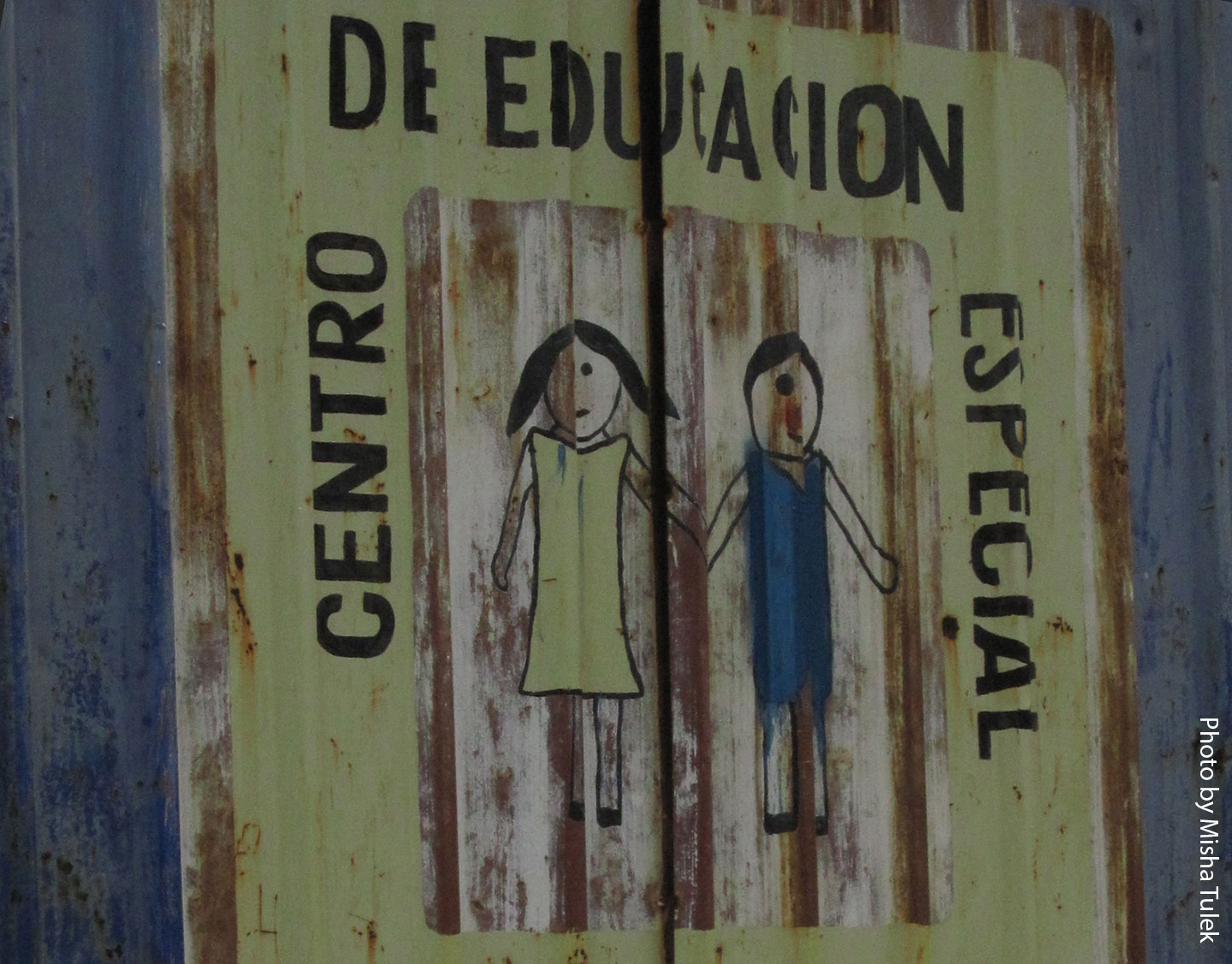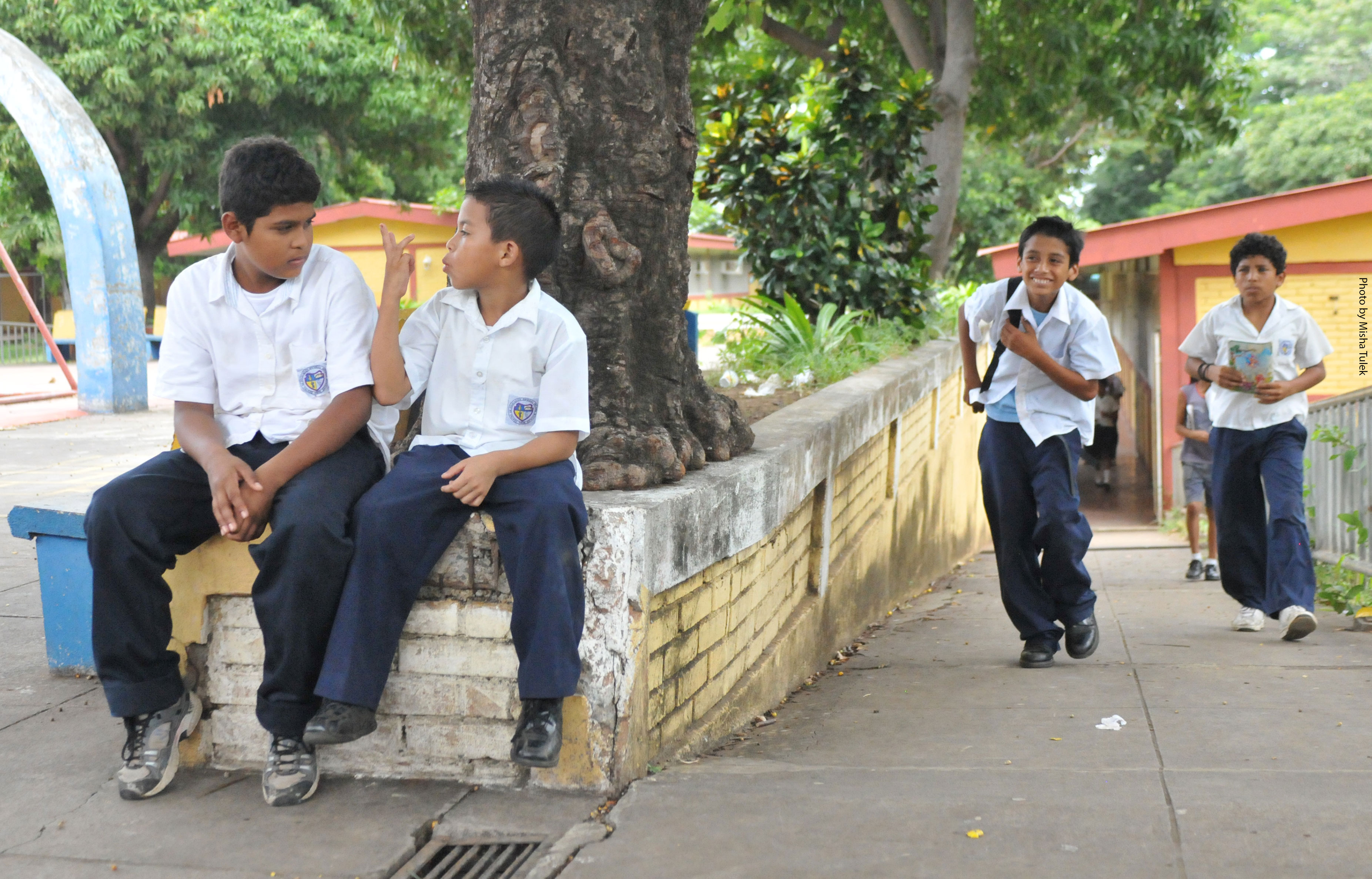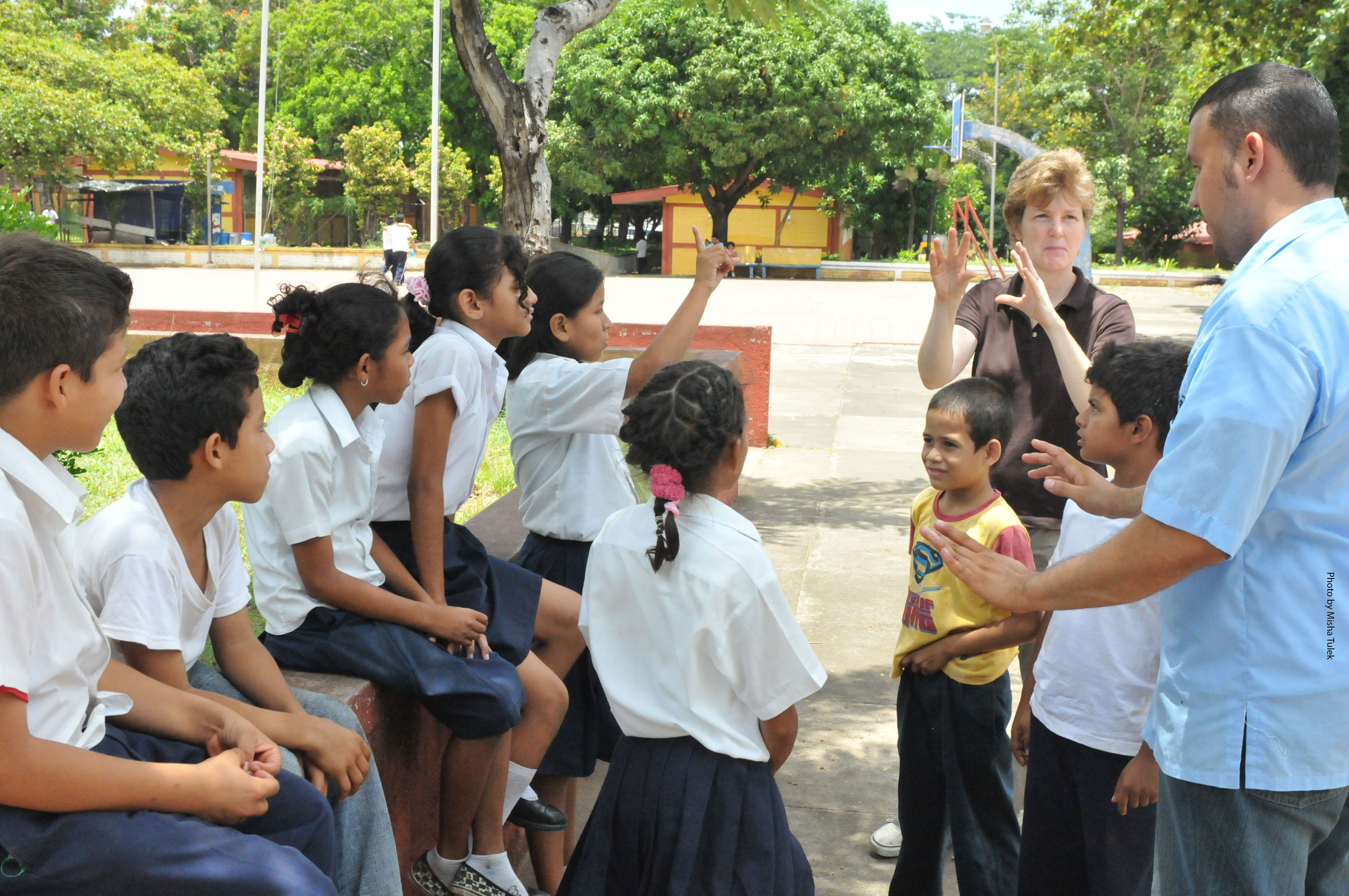

Before the 1970s, Nicaragua had no sign language. Deaf people communicated with family members with home sign, rudimentary signs developed in homes for basic communication. Outside of the home, Deaf people struggled to communicate with each other. Now, just forty years later, Nicaragua has a rich, developed sign language. Nicaraguan Sign Language was not imported from some other country. It was not invented by teachers, parents, or deaf adults and then passed to students through deliberate instruction. The language arose naturally, among a generation of young Nicaraguans who needed to communicate, while they interacted. Nicaraguan Sign Language came from the same place that all languages came from – human minds, trying to connect with other human minds.
Changes in special education in the late 1970s and early 1980s led to dramatic changes in the social lives of deaf people. A new, larger school for special education opened in the neighborhood of San Judas, bringing together more deaf children than ever before, and at a younger age. The initial group consisted of 50 children, ranging in age from 4 to 14. Now, instead of spending most of their time at home communicating via home sign, these deaf children were engaging with each other, and they needed a way to communicate. The first generation of deaf youths, who grew up amidst these changes, was a generation of pioneers. At first, communication was as difficult for them as it had been for the previous generations. Our research has found that as they interacted, they began to change the gestures and home signs they were using. Their vocabulary grew quickly over those first few years, just like when a little child learns to talk. Their signs became more systematized, more regular, and less gestural. The structure of signed sentences became much more complicated.


Nicaraguan Sign Language came from the same place that all language came from-
human minds, trying to connect with other human minds.
By the time this generation became adults, at the end of the 1980s, their signs were rapid and fluent. The language had grown to resemble other languages around the world. It could now express ideas as complex as any other language could. But what happened in the next decade was just as important for the language to survive and grow. The first generation of pioneers, now several hundred adults, passed their language down to a new generation of children. Children who entered the school for special education in the 1990s found a very different linguistic world than the one the first generation had encountered in the 1980s. It was a world rich with signing that had been developing for over 10 years. All the children at the school learned from the children before them, and each new entering class watched, listened with their eyes, and learned to sign within a few short years. New words and phrases – even new ways of putting signs together – entered the language every day as it was used on buses, in the school yard, in the association, and in deaf people’s homes. The community has been growing, with the language, and now there are more than 1500 deaf children and adults who use Nicaraguan Sign Language.
